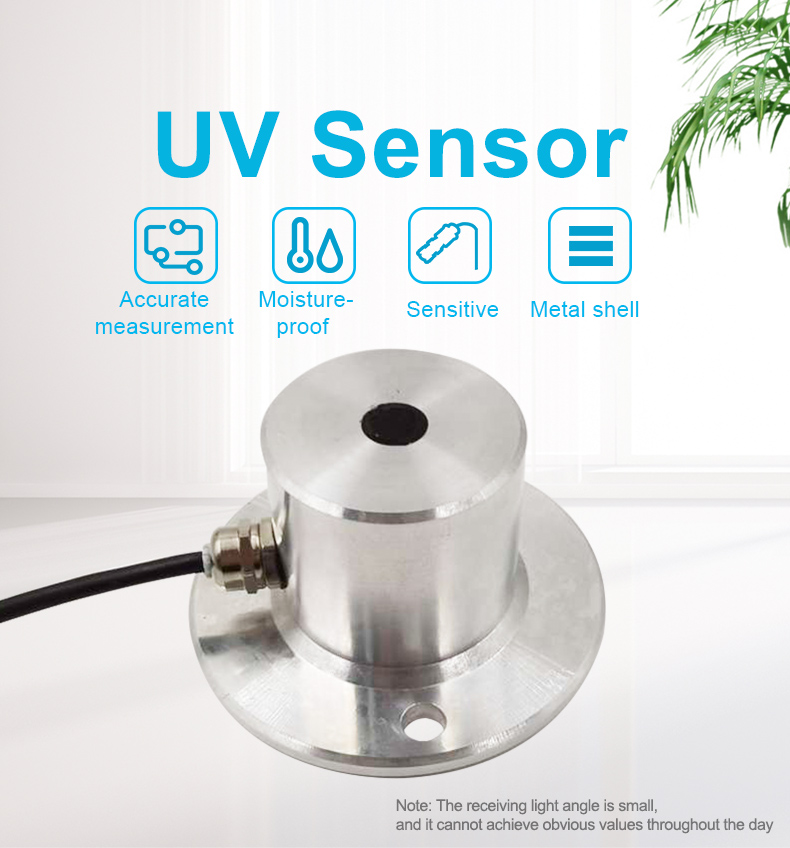Background:
Ultraviolet sensor is a kind of sensor, can use photosensitive elements through photovoltaic mode and photoconductive mode to convert ultraviolet signal into measurable electrical signals. The earliest uv sensors were based on pure silicon, but under the direction of the National Institute of Standards and Technology. Pure silicon diodes also respond to visible light, forming unwanted electrical signals, resulting in poor accuracy. The accuracy of GaN uv sensor is much higher than that of monocrystalline silicon. It is the most commonly used uv sensor material.
With the wide application of electronic computers, more and more attention has been paid to all kinds of sensing technologies for computers. Uv sensors can detect ultraviolet light that is not detectable by human senses, and can avoid the interference of sunlight, lights and other common light sources. Detection of fire traps and flameout protection, photoelectric control of special sites are very useful.
Uv sensor structure – filamentous electrode structure:
The electrodes of such tubes are usually composed of two or more symmetrical wires. This is an early form of the ULTRAVIOLET tube. Multi-purpose the tungsten wire with high purity or platinum wire, the parallel line with closer distance is working area.
Because the uv tube completely depends on the photoelectron emission effect on the electrode surface, the stronger signal is obtained by gas multiplication. The range of spectral response depends on the work of the cathode material. During photoelectron emission, the shorter the wavelength of the photon, the higher the energy. Even a small amount of excited electrons can overcome the escape work and fly out of the cathode surface. Low energy photons, even in large numbers, cannot excite electrons from the cathode surface. The surface purity of cathode material in uv tube is very high. Otherwise it will affect the range of the spectrum and lose its use value. Symmetrical filamentous structure is used for the convenience of processing and as far as possible to avoid contamination of electrode by other substances.
The characteristic of this kind of pipe is that it can work under the condition of AC, and the working current is large. The circuit is simple, and the impurities on the electrode surface can be removed by proper process. However, the Angle sensitivity fluctuates greatly and the workspace is prone to uneven emission.
Structure of uv sensor – spherical cathode structure:
In order to avoid tip effect and make photoelectron emission more stable and uniform, it is necessary to fix the working area on the cathode. Because ultraviolet tube is to rely on photoelectron emission and gas multiplication to complete the optical signal into electrical signals and be amplified. Generally, the light emission efficiency is highest in the area near the electrode. The uv tube with spherical cathode of point structure is designed.
No matter from which Angle the photon radiates to the hemispherical cathode, the discharge region is always at the hemispherical vertex near the anode. Due to the small effective area of the cathode, the operating current of the tube is generally less than 0.3mA. But it has a wider Angle of view and a more uniform Angle sensitivity. It is especially suitable for fire prediction and can also improve sensitivity by focusing method.
The anode is made into a hemispherical reflector in the tube, such as the ULTRAVIOLET photosensitive tube in the United States, which can withstand high temperatures of 540°C. The received UV radiation is reflected to the central cathode, improving the sensitivity of the tube. Because far ULTRAVIOLET radiation has the same linear propagation and reflection effect as visible light.
Structure of uv sensor – plate cathode structure:
The sensitivity of the uv tube depends on the number of photons received from the far ULTRAVIOLET radiation at the cathode. The larger the cathode area, the higher the reception probability. Thus, more electrons escape from the cathode, which are accelerated under the action of the applied high pressure electric field and collide with the gas molecules in the tube to ionize the gas molecules. The ionized electrons collide with the gas molecules, and the cyclic motion eventually discharges the gas in the tube. The chance of such an avalanche discharge depends on photoelectron emission effects at the cathode. In order to improve the sensitivity, a kind of ultraviolet tube with flat cathode structure has been developed in recent years.

UV Sensor:
Ultraviolet radiation sensors use photodetectors to receive electrical signals from ultraviolet light waves. It is a product for measuring solar ultraviolet radiation (UVAβ wavelength range) in the atmosphere. It can be used in conjunction with data acquisition instruments to provide the public with the measurement of UV index and UV erythema. The influence of ultraviolet rays on the human body and the attention of special ultraviolet rays.It can be very good for meteorological monitoring such as ultraviolet rays.